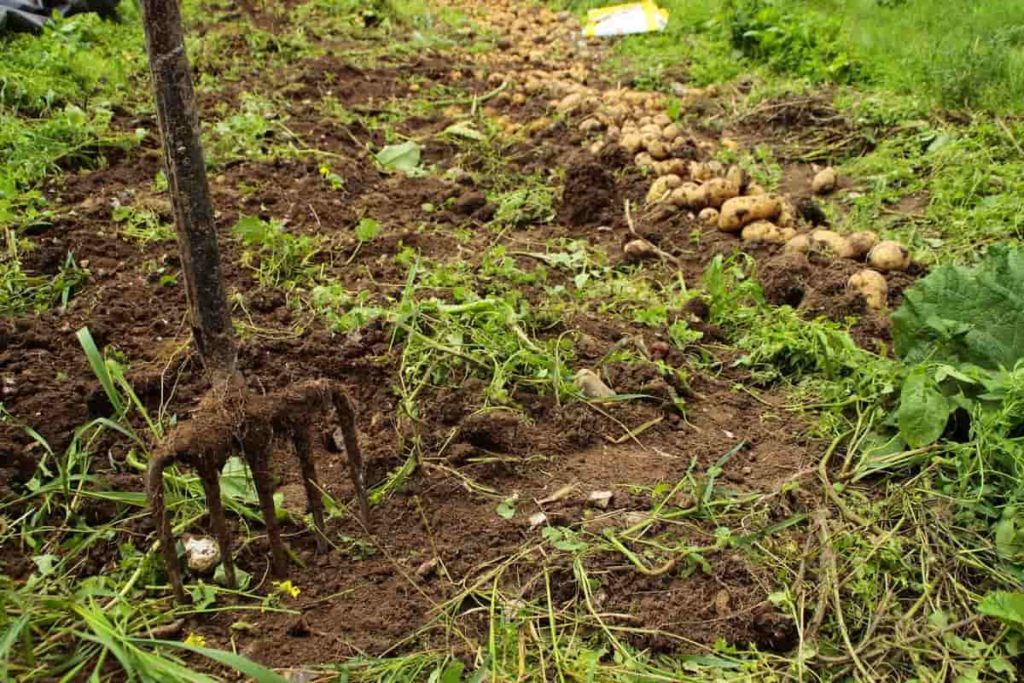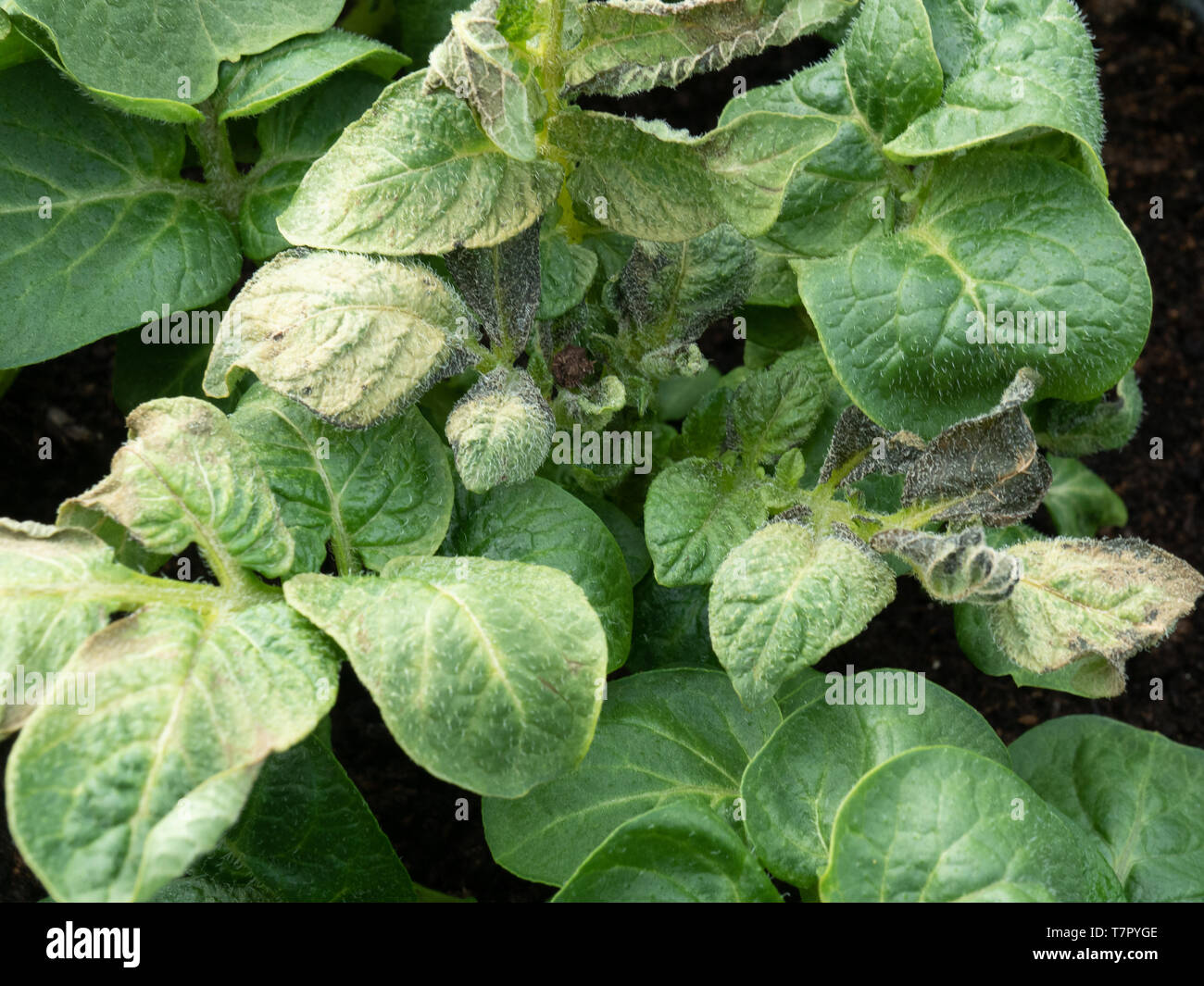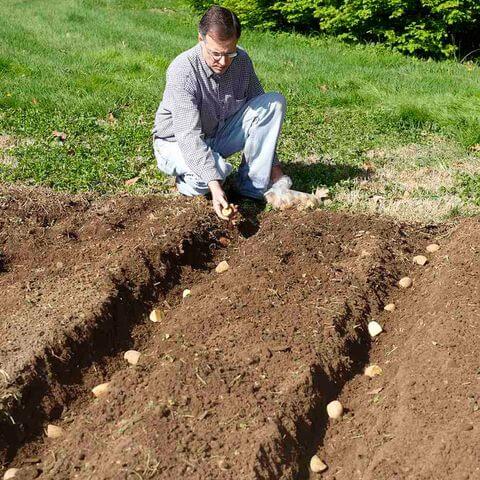What’s Behind the Wilt: Common Reasons for Potato Plant Decline
When potato plants start to wilt, it’s essential to identify the underlying causes to prevent further damage. Wilting can lead to reduced yields, plant death, and even the spread of disease to other plants. Why are my potato plants wilting? The answer often lies in a combination of factors, including environmental conditions, soil quality, and pest or disease issues. By understanding the common reasons behind wilting, gardeners can take proactive steps to prevent this problem and ensure a healthy, thriving potato crop. Neglecting wilting potato plants can have devastating consequences, making it crucial to address the issue promptly. In this article, we’ll delve into the common causes of wilting and provide expert advice on how to prevent and revive wilting potato plants.
Waterlogged Soil: The Silent Killer of Potato Plants
Overwatering is a common mistake that can have devastating consequences for potato plants. When the soil is waterlogged, the roots are unable to breathe, leading to root rot and nutrient deficiencies. As a result, the plant begins to wilt, and if left unchecked, can eventually die. Why are my potato plants wilting? One of the primary reasons is waterlogged soil. To avoid this, it’s essential to check soil moisture regularly. Stick your finger into the soil up to the knuckle, and if the soil feels dry, it’s time to water. Adjust your watering schedule accordingly, taking into account weather conditions and soil type. Additionally, ensure good drainage by adding organic matter like compost or well-rotted manure to the soil. By being mindful of soil moisture, you can prevent waterlogged soil and the subsequent wilting of your potato plants.
The Scorching Truth: How Temperature Extremes Affect Potato Plants
Potato plants are sensitive to temperature fluctuations, which can cause wilting and other problems. High temperatures, in particular, can be detrimental to potato plants, leading to water loss and wilting. Why are my potato plants wilting? One possible reason is exposure to extreme temperatures. When the temperature rises above 85°F (30°C), potato plants begin to suffer. To mitigate the effects of high temperatures, provide shade for your potato plants, especially during the hottest part of the day. You can use row covers, shade cloth, or even old sheets to create a protective barrier. Additionally, ensure good air circulation around the plants to prevent heat buildup. On the other hand, low temperatures can also cause wilting, so protect your plants from frost and freezing temperatures. By understanding the impact of temperature extremes on potato plants, you can take steps to prevent wilting and promote healthy growth.
Pests and Diseases: The Hidden Enemies of Potato Plants
Potato plants are susceptible to a range of pests and diseases that can cause wilting, reduced yields, and even plant death. Why are my potato plants wilting? It’s essential to inspect your plants regularly for signs of infestation or infection. Aphids, whiteflies, and spider mites are common pests that can weaken potato plants, making them more prone to wilting. To manage these pests, use organic or chemical controls, such as neem oil or insecticidal soap, and introduce natural predators like ladybugs or lacewings. Fungal infections, like late blight and scab, can also cause wilting in potato plants. Prevent these diseases by maintaining good soil drainage, avoiding excessive nitrogen fertilization, and using fungicides as needed. Bacterial infections, such as bacterial wilt, can be prevented by using certified disease-free seed potatoes and practicing good sanitation. By being vigilant and taking proactive measures, you can protect your potato plants from these hidden enemies and prevent wilting.
Nutrient Deficiencies: The Key to Unlocking Healthy Potato Plant Growth
Nutrient deficiencies are a common cause of wilting in potato plants. Why are my potato plants wilting? It’s possible that the soil lacks essential nutrients like nitrogen, phosphorus, and potassium. These macronutrients play a crucial role in promoting healthy plant growth and preventing wilting. Nitrogen is responsible for leaf growth and green color, while phosphorus supports root development and flower formation. Potassium helps with overall plant health and resistance to disease. To identify nutrient deficiencies, look for signs like yellowing leaves, stunted growth, and poor tuber formation. Conduct a soil test to determine the nutrient levels and pH of your soil. Based on the test results, amend the soil with organic or synthetic fertilizers to provide the necessary nutrients. For example, add compost or manure to increase the nitrogen content, or use bone meal to boost phosphorus levels. By ensuring your potato plants receive the necessary nutrients, you can prevent wilting and promote healthy growth.
How to Revive a Wilting Potato Plant: A Step-by-Step Guide
If you’re wondering why are my potato plants wilting, it’s essential to take immediate action to rescue them. Reviving a wilting potato plant requires a combination of pruning, repotting, and adjusting environmental conditions. Start by inspecting the plant for signs of disease or pests, and remove any affected leaves or stems to prevent the spread of infection. Next, repot the plant in well-draining soil with a balanced fertilizer to provide essential nutrients. Adjust the watering schedule to ensure the soil is consistently moist but not waterlogged. If the plant is exposed to extreme temperatures, provide shade or protection to regulate the temperature. Prune the plant to encourage new growth and promote air circulation. Finally, monitor the plant’s progress and make adjustments as needed to prevent future wilting. By following these steps, you can revive a wilting potato plant and promote healthy growth.
Preventing Future Wilting: Tips for Maintaining Healthy Potato Plants
To prevent future wilting and ensure healthy potato plant growth, it’s essential to establish a regular maintenance routine. Start by watering your potato plants consistently, but avoid overwatering, which can lead to root rot and wilting. Fertilize your plants regularly, using a balanced fertilizer that provides nitrogen, phosphorus, and potassium. Additionally, implement a pest management schedule to monitor for signs of pests and diseases, such as aphids, whiteflies, and fungal infections. By catching these issues early, you can prevent wilting and promote healthy growth. Another crucial aspect of maintaining healthy potato plants is promoting strong root systems. This can be achieved by providing adequate spacing between plants, using mulch to retain moisture, and avoiding excessive nitrogen fertilization. By following these tips, you can prevent future wilting and enjoy a bountiful potato harvest. Remember, if you’re wondering why are my potato plants wilting, it’s likely due to a combination of these factors, and addressing them can make all the difference.
A Healthy Start: Choosing the Right Potato Varieties for Your Climate
When it comes to growing healthy potato plants, selecting the right variety for your local climate and soil conditions is crucial. Different potato varieties have unique characteristics that make them more or less susceptible to wilting. By choosing a variety that is well-suited to your region, you can reduce the risk of wilting and promote overall plant health. For example, if you live in an area with hot summers, you may want to choose a variety that is heat-tolerant. Similarly, if your soil is prone to waterlogging, you may want to choose a variety that is resistant to root rot. Additionally, consider factors such as disease resistance, maturity days, and tuber size when selecting a potato variety. By doing so, you can set your potato plants up for success and reduce the likelihood of wilting. Remember, if you’re wondering why are my potato plants wilting, it may be due to a mismatch between your potato variety and local climate. By choosing the right variety, you can avoid this common pitfall and enjoy a thriving potato crop.






